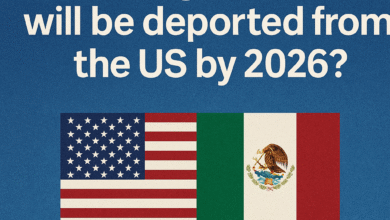How Do Embassies Handle Incomplete Immigration Files?

Immigration is a complex process, and embassies deal with thousands of applications every month. While many applicants believe that submitting a complete file guarantees a smooth process, what often causes delays — or even rejections — is an incomplete file. But how do embassies actually handle these situations behind the scenes?
Let’s explore the process step-by-step.
🔍 What Is Considered an “Incomplete Immigration File”?
An incomplete file typically means that one or more required documents are:
- Missing entirely
- Expired or invalid
- Not translated properly (if applicable)
- Incomplete (e.g., missing signatures or data)
- Inconsistent (e.g., data conflicts between forms)
- Examples include:
- Missing passport copy
- No proof of financial support
- Lack of police clearance
- Incomplete medical examination
- Missing signatures on key forms
📥 Step 1: Initial File Intake
When your immigration application arrives at the embassy:
A visa officer or intake specialist logs your file and checks it against a document checklist.
If critical documents are missing, the file is usually flagged.
Depending on the country and embassy, the file may be marked as “Pending Additional Information.”
🔸 At this point, your file is not yet rejected, but it is also not moving forward.
📤 Step 2: Request for Additional Documents (RFE)
If your case is still eligible, the embassy may issue a Request for Evidence (RFE) or Request for Additional Information. This is your second chance.
What happens:
You’ll receive an email or written letter.
You’re given a specific deadline (usually 15–90 days).
Some embassies allow partial uploads via online portals, while others require documents by mail.
👉 Important: Failing to respond by the deadline may result in automatic denial.
⏳ Step 3: Temporary File Hold or Return
If you do not respond to the embassy within the required timeline:
Your file might be placed on hold for a fixed period (some embassies allow grace periods).
In stricter cases, your entire file is returned or archived.
You may need to start the application all over again.
❌ Step 4: Rejection or Refusal
If the embassy deems that your file is missing key documents (such as proof of relationship, security checks, or medical exams):
You may receive a formal refusal letter with a reference to the missing documents.
In many cases, appeals are not allowed unless explicitly stated.
Some embassies allow reapplication immediately, while others require a waiting period.
🧠 Common Reasons for Incomplete Files
Rushed submissions near a deadline
Misunderstanding what “certified” or “notarized” means
Trusting outdated advice or third-party agents
Technical upload issues (corrupted PDF files, blurry scans)
Translation errors or documents not in English/French (depending on country)
🛡️ Can You Prevent This? Yes, Here’s How:
Use the official embassy checklist (not a third-party version).
Double-check expiry dates, signatures, and translations.
Avoid submitting “placeholders” like “to be submitted later” – most embassies reject that.
Use a legal advisor or immigration consultant if unsure.
Always keep digital and physical backups of what you submitted.
💬 Insider Tip from Former Visa Officers
“The worst mistake isn’t forgetting a document — it’s failing to respond to our request on time. We can work with applicants who try. We reject the ones who ignore.”
✅ Conclusion: Incomplete Doesn’t Mean the End
Embassies do not automatically reject incomplete immigration files — but time is not on your side. The more organized, responsive, and transparent you are, the better your chances.
Treat every immigration application as a formal legal process — not just paperwork. One document can make the difference between a visa issued and a dream delayed.

